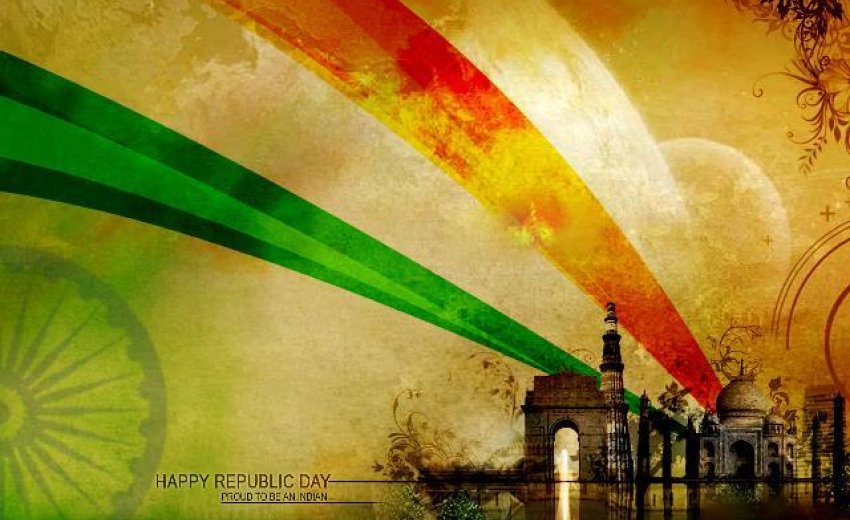INDIA 2016
by I.J. Singh
INDIA, the world’s largest nominally democratic, secular nation celebrated its nationhood just days ago on January 26th. Today, I briefly explore India and her offspring out here in the diaspora. So, why now, a few days after India’s Republic Day? I was waiting for the celebration and hoopla to wind down.
There is now a generation that came from India and has spent a lifetime outside that besotted (or blessed, if you like) land. Is it not surprising to find such “Oreos” absolutely flummoxed about their relationship with the mother ship?
Having lived outside India for most of my life, there are times when I fondly look back to my younger days in that country that shaped my early years. But there are more days when I am ashamed of that nation and fondly look forward to joining the India-bashing brigade that is found in every community of expatriate Indians. Heaven knows that India today offers reasons galore for both – lauding it handily or bashing it mercilessly.
Today, at least somewhat, if not entirely, I intend to dance in the middle. First a couple of loaded pronouncements and then we’ll see where we go from there.
In today’s globalized existence I see that India is unquestionably strategically important but only minimally influential in the comity of nations and in the framing of international policies.
I look at India’s glorious, and at times exaggerated glorified, past and I see that India has given the world many things and important ideas but rarely has it given any effective or productive leadership.
I would beseech any passionate Indophiles to put aside their umbrage and bear with me just a while. Where should I begin?
I am well aware of the richness of India’s past. I know of India’s contribution to the concept of zero that made modern mathematics the driving force it is. I know as well the awe-inspiring art of Ajanta and Ellora that fascinate us eons later.
I know the deeply complex amalgam of a very rich philosophy and mythology that are the foundations of Indian culture and society. But the two are so intimately intertwined that it becomes a Herculean task to separate the strands. Yet their influence pervades everything in India – from the senseless and often pointless Bollywood products to the fascinating rocket science. The governing political structure of the country continues to promote this crazy mix as “modern science and literature” in its schools and colleges. I would say that such shenanigans stem from a monumental case of low self-esteem. Yet, I am fully aware of paradigms like yoga and transcendental meditation etc. that have found a welcoming home and unbelievable success the world over.
India remains to a large extent a nation that is an artificially structured and hammered together reality — a little like the modern European Union or the erstwhile Soviet Union. In fact, less like the former and more like the latter – autocratic and arbitrary where power trickles down from dishonest politicos and cronyism at the top.
Remember that India was never a nation and had no sense of nationhood except for brief periods of history – perhaps the reign of Ashoka, the Mughal dynasty and the British occupation – less than 500 years in toto. The many parts of the Subcontinent that existed as semiautonomous or independent entities for centuries differed in culture, language, history, music, cuisine – in all ways that define separate nations. They have been hammered into a modern nation only after 1947 using a ham-handed recipe that ignores or diminishes the many minorities, cultures and languages that constitute the richness of the land and its people. In India today, power trickles down from corrupt political and business honchos at the top. Keep in mind that, in stark contrast, in functioning democracies all power emerges from the bottom; it rises up and empowers political leaders who serve the people. Accountability and transparency, which should be the keys to good governance, remain largely missing in India today.
Since its independence from the British in 1947, India has not treated its many minorities fairly. Constitutional protections in law exist but not in practice. Successive Indian governments have asserted their power by flagrant violations of law and principles of enlightened governance, particularly against minorities, be they Sikh, Muslim, Christians, or others. The continuous and determined Hinduization of India does not sit well. After 1984 I don’t think India has any right to the loyalty of Sikhs, but that’s a longer matter on which much has been written by many. I remind you that over a thousand years ago when Hinduism was ascendant, Buddhism was systematically decimated in India. Now it is Sikhi that seems to be under the gun. Modern India’s record on human rights remains shamelessly atrocious, while we Sikhs remain engaged in infighting over viable counter strategy and tactics.
I see that I have made many accusations here. They are superbly well documented but this essay is not the place to dissect them further.
In Asia today, China is the rising great power that we need to watch. Next door in the Middle East, radical Islam has steadily become a formidable threat to world order. How to keep these two in check is the question. The lands dominated by Islam have most of the reserves of oil that the world depends on, and Pakistan controls active nuclear power.
India is strategically located in Asia. It has the manpower and the core technology that could, if harnessed and developed, become a sustainable and credible challenge to rising Chinese hegemony. India’s large Muslim population can become the counterweight to the growth of radical Islam. India also is a large site for low-cost labor that can satisfy off-shore technological and manufacturing needs of the World. India, like its closest neighbor Pakistan, also has nuclear power.
Hence the West’s infatuation with India. Ergo, India’s failures of democracy can, and continue to be, forgiven. History teaches us that geopolitics and economic issues will always trump moral constraints.
So, India today, not surprisingly, has an almost impermeable Teflon coating as its armor. The moral state of India deserves analysis, some bashing, even excoriation, but this plexus of nations deserves its place in the sun along with a bundle of patience.
I remember that India gave me a fairly inexpensive but decent, if not superb, education through high school and college before I came to the USA. This meant that a couple of years of training here prepared me for an enviable career track. Think for a moment: India, a poor country that can ill afford to educate every Indian, educated me to a level that only minimal further training here was necessary. In the process, America gained a trained professional on the cheap. Think of this when you come across the many India-trained professionals — engineers, physicians and computer mavens or nurses etc.
My India-bashing, therefore, is leavened with ample, but not at all total, forgiveness. In a way, from its puny coffers, India has been giving considerable reverse foreign aid to America all these years – not in cash but in human capital.






